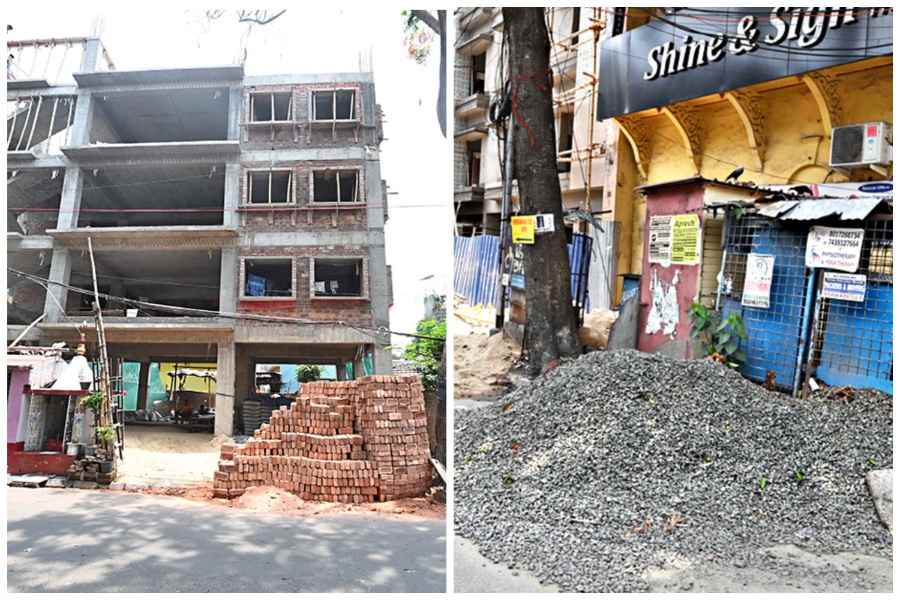Construction materials are stacked on footpaths and even on roads across the city despite there being ample space at the construction sites to store them.
As footpaths remain blocked, pedestrians are forced to walk on roads, risking their lives. The situation is worse at places where construction materials are dumped on pavements as well as on roads because pedestrians are forced to move closer to the middle of the carriageway.
The Kolkata Municipal Corporation (KMC) allows builders and plot owners to stack construction materials — such as bricks, stone chips and sand — on pavements for three months from the issue of the building permit or till the first-floor roof casting is over. But this rule is flouted almost everywhere.
Besides obstructing pedestrians' movement, the materials also contribute to air pollution as they are left without any cover.
On Sunday, The Telegraph spotted building materials scattered on the carriageway outside construction sites along Manoharpukur Road, Rashbehari Avenue, Gobinda Auddy Road and Jainuddin Mistry Lane in Chetla and on Sadananda Road (near the Hazra crossing).
On Nepal Bhattacharjee Street, Sadananda Road and Manoharpukur Road, sand and stone chips were found dumped on footpaths in front of multiple under-construction buildings.
No enclosure was made for the sand, because of which the sand scattered over an area much larger than where it was originally dumped.
The section of the roads along the edges of the sand pile has turned slippery,increasing chances ofaccident.
A south Kolkata resident said there were numerous under-construction buildings in Ballygunge and Gariahat where building materials have remained dumped on pavements for more than three months.
“I am forced to walk on the road with vehicles speeding past. The authorities should ensure there is a barricaded walkway on the road on stretches where the footpaths are blocked by construction materials,” he said.
“When a building permit is issued, the plot owner is asked to deposit a fee for keeping materials on the footpath. On narrow roads where there is no footpath, they can stack materials on a portion of the road leaving space for vehicles to move,” said an official of the KMC.
This permission is valid for three months or till the first-floor casting is complete, the official said. If for any reason the casting gets delayed, the owner can apply to the KMC and seek an extension of the duration of the permission after paying a fee.
“Under no circumstances, they are allowed to keep materials on a footpath or a road after the first-floor casting is done,” the official said.
The KMC has the power to remove the materials if they remain on a pavement or a road for more than the stipulated period. The civic body can also issue a “stop-work notice” for violation of order. But such action is rarely taken.
